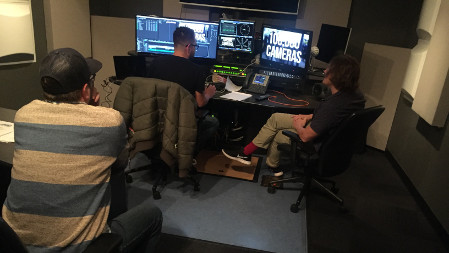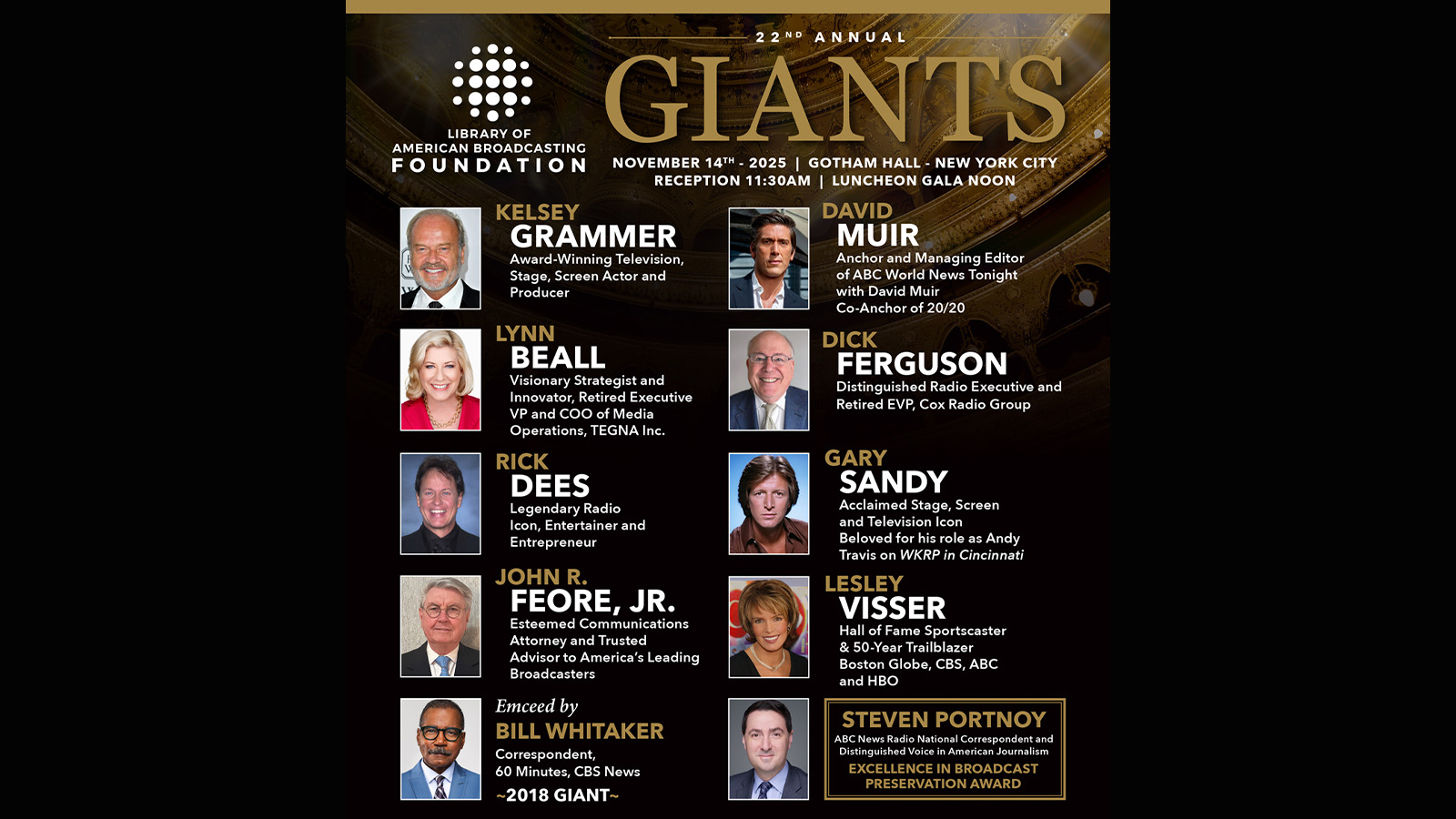'100,000 Cameras' Offer Sweeping View of Ohio State-Michigan Game
LOS ANGELES—Sports production has long relied on incredible zoom lenses to give viewers amazing close-up views of subtle details that can mean the difference between safe and out, in and out of bounds and even winning or losing. But what about the macro view? Not some sort of wide-angle, spy-in-the-sky camera that captures everything like the 8K cameras mounted at the tops of some stadiums for area-of-interest applications, but rather a view that’s even bigger.

One that looks at a sporting event as more than just a game. One that regards the game itself as a part of a much larger spectacle—an event that brings hundreds of thousands of people together on a single day, whether they are in a particular stadium, at home in the living room or at a favorite sports bars, to share the unique experience of game day.
That’s the mission of “100,000 Cameras: Ohio State at Michigan,” a 30-minute documentary being produced this week to air Dec. 2 at 11:30 a.m. ET on Fox before the network’s coverage of the Big 12 Championship Game.
Produced by FS1 and NASCAR Productions, the documentary draws heavily on footage shot by fans with their cellphone cameras and video cameras Nov. 25, the day of the Ohio State-Michigan game, and submitted via various social media sites like Facebook, Twitter and Instagram, via YouTube or uploaded to a special Dropbox folder. “We received about 1,000 submissions using the hashtag [#100KCams] and also the game hashtags,” says Tally Hair, NASCAR Productions managing director/executive producer who is responsible for the show.
While he found it difficult to say exactly how many crowdsourced video clips and photos will be used, Hair estimates about 500 will make it into the documentary. That fan-generated content, some of which comes from as far away as London, Brussels and Rio de Janeiro , is integrated with Fox Sports game footage and that of crews Hair sent into the field on game day to present what Fox calls “the life in a day of college football.”
The danger, Hair says, is walking away from the project with what amounts to nothing more than a hodgepodge of user-generated content. “From a storytelling standpoint, we’re trying to make sure it wasn’t just one giant, long social highlight of clips of people filming themselves or the TV,” says Hair.
Hair drew on the experience of the first two “100,000 Cameras” documentaries—the May 2015 Talladega Monster Energy NASCAR Cup Series race and the 2016 Daytona 500—to employ a strategy that identifies certain “characters” who are members of the schools’ student bodies, their athletic departments and super fans, and recruits them long before kickoff to submit footage of their game day experiences and to be interviewed by Hair’s roving crews, he says.
Get the TV Tech Newsletter
The professional video industry's #1 source for news, trends and product and tech information. Sign up below.
For example, one of the special characters is an Ohio State fan who submitted footage of leaving the Columbus area at 4:30 a.m. to arrive in Ann Arbor, Mich., in time for the game. “You will see these certain characters threaded throughout the show. That makes it a little more heartfelt,” he explains.
To complete a show that is picture-locked by Wednesday afternoon, Hair’s team of 10 producers begins its mad dash early Saturday morning accessing submitted fan footage, organizing it into folders structured to track pre-defined time intervals prior to the game, then by quarter and finally post game. That initial organization is critical to keeping the entire project on track, says Hair. “The workflow is like a giant funnel,” he says. “We have this massive amount of content coming in, and as it goes down the funnel that amount gets smaller and smaller as footage is identified for the show.”
The technology advancement that has most improved the production workflow on the front end when compared to the original “100,000 Cameras” production in May 2015 is the use of hashtags for footage submissions. “The first year, we were geo-fencing everything. That was extremely helpful at the time, but today you don’t need to do that as much because people are using hashtags, which makes it easier to find submissions,” says Hair.
Producers on the show work in Adobe Premiere, relying on its ability to convert Twitter, Instagram and Facebook footage into Apple ProRes LT 720p, the production’s house standard. Similarly, Fox’s game coverage that is ingested in real time and footage from Hair’s field crews are transcoded into the house standard. Ultimately, the final show is transcoded to 720p HD for distribution by Fox. “We try to do it [transcode] on the front end, so we don’t get nipped in the bud on the backend,” he says.
This massive winnowing process to identify the best of the fan footage on such a tight deadline takes its toll on Hair’s production team. “If you look at the producers’ faces when you leave here on that first night and then on Sunday, they are a little bit overwhelmed,” he says. However, as refinements were made, the show more tightly organized and permission to use the fans’ footage is secured, a growing sense of optimism and excitement about the show lifts their spirits, he adds.
As the week progresses, Hair’s team of 10 producers shrinks as the workload lightens. The balance of the week is devoted to color correction, final editing, audio sweetening and getting approvals from Fox and Standards and Practices, Hair adds.
The final product is a documentary that’s about 80 percent fan-submitted content, which is the heart and soul of the spectacle that is a macro view of game day with the emotional hook to connect with viewers.
“We walked away from the game feeling like the fans from those two schools are super passionate about this game,” says Hair. “We hope to bring that forth through this show. Hopefully, when the fans from both schools walk away from the show they will feel a sense of pride to be part of this community and part of an incredible rivalry.”
Phil Kurz is a contributing editor to TV Tech. He has written about TV and video technology for more than 30 years and served as editor of three leading industry magazines. He earned a Bachelor of Journalism and a Master’s Degree in Journalism from the University of Missouri-Columbia School of Journalism.

